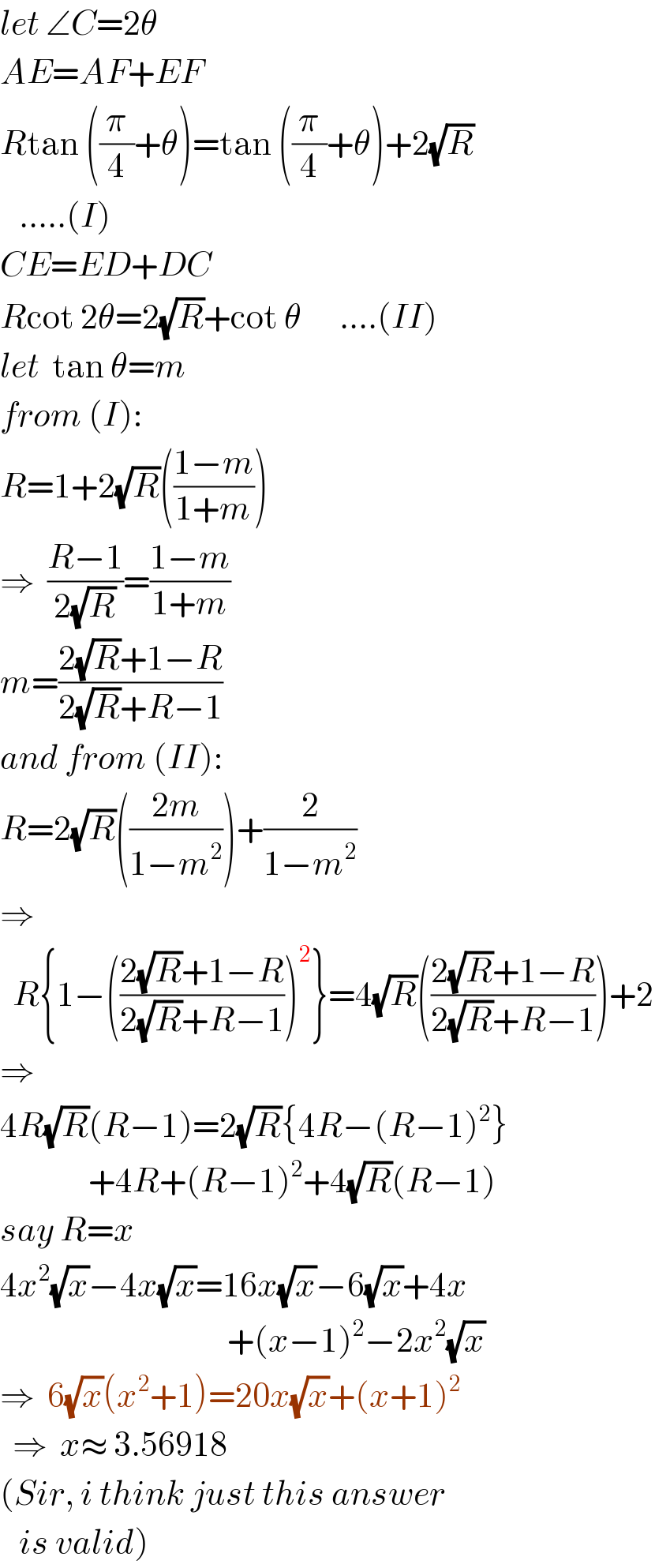
Question and Answers Forum
Question Number 125508 by ajfour last updated on 11/Dec/20

Commented by ajfour last updated on 11/Dec/20

Answered by ajfour last updated on 11/Dec/20

Commented by ajfour last updated on 11/Dec/20

Commented by mr W last updated on 11/Dec/20

Answered by mr W last updated on 11/Dec/20

Commented by mr W last updated on 11/Dec/20
![sin α=((R−1)/(R+1)) sin β=(1/(R+1)) γ=α−β=(π/2)−2α ⇒3α=(π/2)+β ⇒sin (3α)=sin ((π/2)+β)=cos β ⇒sin α (3−4 sin^2 α)=cos β ⇒(((R−1)/(R+1)))[3−4×(((R−1)/(R+1)))^2 ]=((√((R+1)^2 −1))/(R+1)) ⇒(R−1)[3−4×(((R−1)/(R+1)))^2 ]=(√(R(R+2))) ⇒R≈2.3981 or 3.5692](Q125518.png)
Commented by ajfour last updated on 11/Dec/20

Answered by islom last updated on 11/Feb/21

